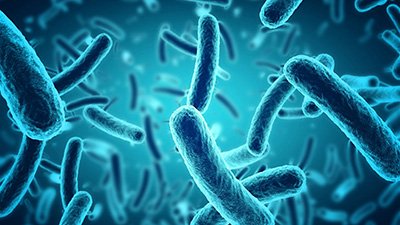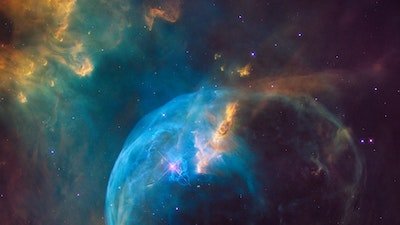Old Views, New News
Believe it or not, the famous Miller–Urey experiment of the 1950s is still making headlines in the creation–evolution controversy.
News Source
In the biochemistry experiment, which took place more than half a century ago at the University of Chicago, graduate student Stanley Miller, adviser Harold Urey, and others ran an electric charge through a mixture of gaseous elements thought to replicate the early earth’s atmosphere. The apparatus eventually produced a small portion of simple amino acids along with carcinogenic tar.
The results may seem underwhelming, but it’s the closest evolutionists have come to demonstrating how even the simplest life-forms could have originated from inanimate matter. For that reason, evolutionary researchers have remained enamored with the prospect of producing life from non-life in the lab—although they’ve since changed their minds about the composition of the early earth’s atmosphere.
In October 2008 we discussed the research of University of California–San Diego biochemist Jeffrey Bada, a former student of the late Miller, who inherited several boxes full of vials from Miller’s experiments. Bada and a team of researchers are continuing to report their analyses of what is inside the decades-old vials—the “dried sludge” that is all that remains of a series of experiments like the one that made Miller famous.1 (For whatever reason, Miller saved the vials but apparently never analyzed their contents.)
The team found twenty-three amino acids inside the latest set of vials, including six amino acids that contain sulfur. Several sulfur-based amino acids play a prominent role in life, so the finding has excited evolutionists who are still eking hope out of the half-century-old experiments.
What the evolutionists can’t be excited about are the lingering problems with the experiments. For one thing, as we mentioned above, evolutionists disagree about the composition of the early earth’s atmosphere. The scientists believe Miller’s use of hydrogen sulfide in the experiment was pivotal in allowing sulfur-based amino acids to form, but debate lingers over where life on earth could have (supposedly) appeared and whether sufficient hydrogen sulfide would have been present. (Of course, a truly committed evolutionist will point out that simply because life exists, we have sufficient proof that it must have evolved, somehow!)
The team also notes that the experiments produced an equal amount of “left-handed” and “right-handed” amino acids. Although this is taken as evidence that microorganisms did not contaminate the vials, it is also a major obstacle to the idea that life originated through inanimate processes because of the so-called “chirality” problem.
The origin of simple organic molecules is a far cry—and a number of highly unlikely steps—away from even the simplest self-reproducing life-forms powered by RNA.
As we’ve written before, there is still a much bigger element of magic than science in evolutionary origin-of-life models. The origin of simple organic molecules is a far cry—and a number of highly unlikely steps—away from even the simplest self-reproducing life-forms powered by RNA. In fact, if anything, the Miller–Urey experiments are a reminder that the organic molecules produced through even carefully controlled laboratory processes are nothing like life.
Further Reading
- Get Answers: Origin of Life, Science
For More Information: Get Answers
Remember, if you see a news story that might merit some attention, let us know about it! (Note: if the story originates from the Associated Press, FOX News, MSNBC, the New York Times, or another major national media outlet, we will most likely have already heard about it.) And thanks to all of our readers who have submitted great news tips to us. If you didn’t catch all the latest News to Know, why not take a look to see what you’ve missed?
(Please note that links will take you directly to the source. Answers in Genesis is not responsible for content on the websites to which we refer. For more information, please see our Privacy Policy.)
Footnotes
- Eric T. Parker et al., “Primordial Synthesis of Amines and Amino Acids in a 1958 Miller H2S-rich Spark Discharge Experiment,” PNAS 108, no. 14 (March 21, 2011): 5526–5531, doi:10.1073/pnas.1019191108.
Recommended Resources

Answers in Genesis is an apologetics ministry, dedicated to helping Christians defend their faith and proclaim the good news of Jesus Christ.
- Customer Service 800.778.3390
- © 2024 Answers in Genesis







